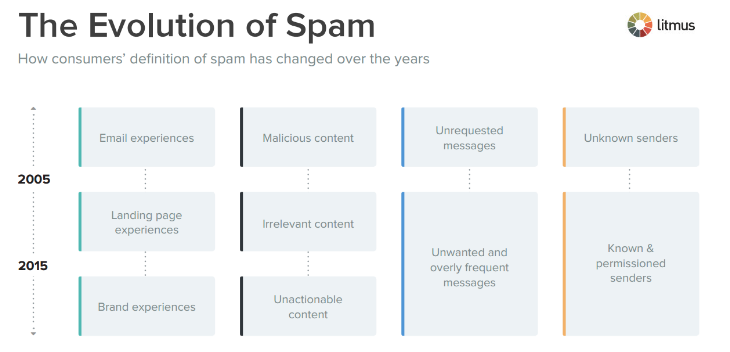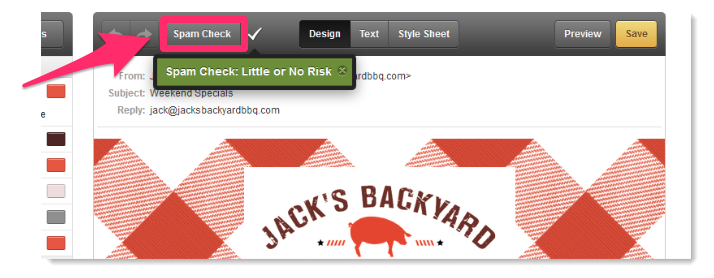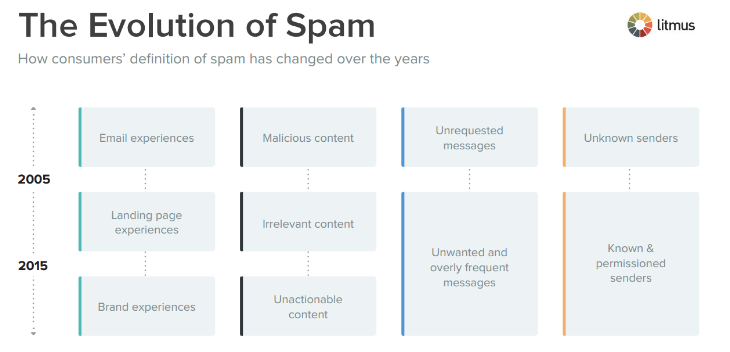Studies show 57% of people say getting too many emails from a sender or receiving irrelevant messages causes them to mark the content as spam. Being a reputable brand and sending messages only to your subscribers doesn’t make you immune to this. Don’t buy subscribers As I just said, even recipients who subscribed to receive emails from a brand are still marking messages as spam. If they are used to receiving your marketing emails from the same sender address and one day it comes from a different one, they may think it’s spam. Don’t try to trick the recipient I see people make this mistake all the time. You could have the best promotional message in the world, but nobody will see it if they don’t open the message. These are all great types of subject lines that will entice your subscribers to open your messages instead of reporting them as spam. Don’t send marketing emails too often. Learn how to write subject lines that lead to opens and clicks as opposed to the spam folder. How is your brand writing promotional emails without getting marked as spam?
Email marketing needs to be a priority for all businesses in 2018.
It doesn’t matter what type of company you have or what industry you’re in. In fact, 89% of marketers named email as their primary method of lead generation.
If you are putting more effort into your email marketing strategy, you’ve got the right mindset.
That said, just because you’re sending lots of promotional emails doesn’t necessarily mean they are effective.
Some of your emails might be getting marked as spam.
You spent time carefully writing your content, but you didn’t get the results you had expected. Why did that happen?
As you’ll soon learn, there are several different reasons why your emails are getting marked as spam. That was my inspiration for writing this guide.
I want to help you identify what’s putting your messages in the spam folder.
Even if you’re not currently getting your content marked as spam, you can still benefit from this guide. Understanding these email principles and best practices for writing marketing content will help you avoid these mistakes in the future.
In a perfect world, your emails should go straight to the recipient’s inbox, get opened, and generate click-throughs.
But you can’t get conversions if your content is being marked as spam. Keep my recommendations in mind, and use this guide as a reference moving forward.
Understand how consumers define spam
Spam used to be pretty easy to identify.
You’d get a message saying you won a contest you didn’t enter. The subject line would have a bunch of stars and other sketchy characters.
The message would come from an unknown sender.
In your lifetime, you probably even got some spam messages with subjects featuring NSFW content. I don’t think I need to provide an example of this since I’m sure you have an idea of what I’m referring to.
Years ago, spam would even contain malicious content, e.g., attachments containing viruses or phishing scams.
But email software has improved over time, and these messages tend to go straight to the spam folder.
However, now legitimate brands are getting emails marked as spam because the consumer definition of it has changed:

As you can see, consumers report messages as spam even if they know the sender. They’ll even flag spam from senders who have their permission to send them emails.
This is a big game changer.
Someone could willingly sign up to receive emails from your brand and still send your content to the spam folder.
Studies show 57% of people say getting too many emails from a sender or receiving irrelevant messages causes them to mark the content as spam.
What does this mean for you as a marketer?
It means that your promotional messages are susceptible to getting marked as spam. Being a reputable brand and sending messages only to your subscribers doesn’t make you immune to this.
Don’t buy subscribers
As I just said, even recipients who subscribed to receive emails from a brand are still marking messages as spam.
If you’re buying email lists and sending content to people who never signed up to receive them, there is even a greater chance you’ll be heading for the spam folder.
Furthermore, you’re putting yourself at risk of violating the CAN-SPAM Act, which is enforced by the Federal Trade Commission.
Overall, sending unsolicited emails is just a losing strategy. In addition to the legal repercussions, it’s terrible for your brand reputation.
An average person who works in an office receives 121 emails each day. They won’t waste time checking unwanted messages.
Put yourself in their shoes for a minute. If you get a promotional message from a brand you never heard of and never signed up for, are you going to buy something from them? Probably not.
You can’t expect to see results from other people who receive these unwanted messages.
Instead, you should be focusing on how to grow your email list by getting new subscribers. Include signup forms on your website.
Research shows that the most common placement for email opt-in forms is in the footer of each page.

Now, you’ll be sending promotional content to people who actually want to hear from you as opposed to random email addresses you purchased.
Check spam risk before you hit send
Most email software for marketers has a built-in feature that checks for spam.
It scans your message and determines how likely it is to get sent to the spam folder.
To avoid a high spam risk, make sure you limit the use of promotional words such as:
- free
- buy
- promo
Don’t get me wrong, you can include these words in your message, but use them sparingly.
Avoid special characters and writing in all capital letters. Don’t make obscure choices, e.g., adding spaces between letters, like F R E E.
Make sure the size of your email isn’t too big either.
If you’ve got links, be sure they from reputable websites with a high domain authority.
Your messages shouldn’t be too text-heavy or image-heavy. Balance text and images.
Don’t include too many colors or text written in colors difficult to read.
Here’s an example of what the spam check feature looks like on the Constant Contact platform:

…

COMMENTS